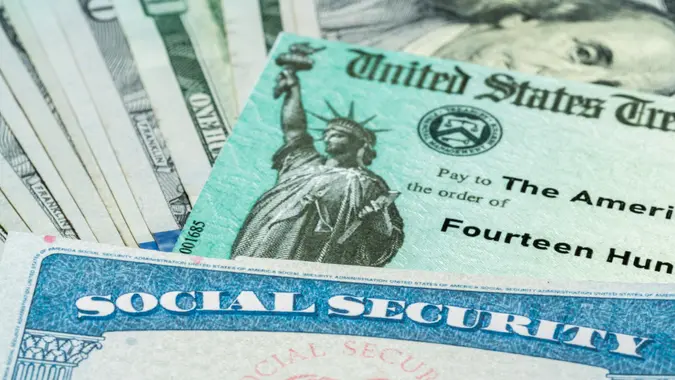Max Marvelous -
An economic downturn is inevitable in 2023. Thanks to rising inflation and very few pay raises to match it, as well as skyrocketing interest rates and other contributing factors, Americans need to be prepared for the worst in the coming year.

After $5 Trillion Stimulus A Significant Economic Downturn Is Inevitable in 2023
Stimulus Only Goes So Far
The United States government gave around $5 trillion in stimulus checks to help Americans in the thick of the pandemic. And as a result of the pandemic, lending programs with low-interest rates were created to further assist Americans.
The economy was seemingly moving in a forward direction again. The world began to open up, and it seemed like the economy was recovering fully. It was obviously too soon for celebration, though, because soon after, things seemed to be settling, inflation rates began to skyrocket, and the economy started back into a downward spiral.
Americans have been left wondering how bad the economy will get in the future and how they will be affected by it long term.
Making Ends Meet
Many Americans are still struggling to pay for basic needs like rent and food, and with rising interest rates, anyone without a fixed mortgage is suffering from increasing monthly payments.
With inflation seeping into every industry, most notably food and gas, the future of the economy is looking bleak, and many are not sure they are prepared for what is ahead.
Related video: U.S. economy returned to growth in third quarter despite surging inflation Duration 6:21 View on Watch
No More Pay Raises
Employers are also having to prepare for the potential consequences of an economic downturn. Many companies are already slowing or have completely halted the hiring process. The labor market did peak at one point, which benefited everyone, as people's incomes were able to counteract the effects of inflation.
With the inevitable economic downturn, companies have stopped increasing pay at such significant rates in order to prepare themselves for the coming crisis.
Bye Bye Savings
Many Americans were able to bolster their savings during the pandemic. With no travel plans or any need to drive anywhere, money that may have been put towards vacation or gas was able to be redirected into savings. Unfortunately, many of those savings accounts have dried up as people's incomes can no longer compete with rising inflation rates.
Despite the high rates, however, American spending has remained healthy, with many people living on their savings and giving up their safety nets. These spending habits could put Americans in an even worse spot when the downturn inevitably hits.
An Underperforming Economy
The economy failed to meet the protections that economists set for 2022, making an economic downturn a sure thing. Experts are projecting even higher interest rates going into the holidays and new year as well as an even more aggressive increase in inflation.
2023 will be a tough year for Americans, and everyone should begin preparing for this economic downturn because everyone will feel the effects when it hits.

BackyardProduction / Getty Images/iStockphoto
The pandemic triggered the largest flood of federal dollars into the American economy in the country’s history — $5 trillion in combined stimulus payments. The money poured into local governments, hospitals, small businesses, airlines, the healthcare system and directly into American households. According to The New York Times, most economists credit the stimulus with speeding up the economy’s recovery, helping countless businesses stay open and preventing millions of people from losing their credit ratings, being evicted and going hungry.
Here’s a look at how that $5 trillion was spread around and who it helped the most.
The Lion’s Share Went Directly to People and Families
The combined stimulus packages represent one of the greatest transfers of wealth in world history, according to CNBC, and certainly the greatest transfer of dollars from the American government to its people.
According to the Times, $1.8 trillion in stimulus — the largest percentage of the combined $5 trillion — went straight into the pockets of people and families. The biggest chunk of the $1.8 trillion by far — $817 billion — was delivered in the form of direct-payment stimulus checks. Here’s how the rest was distributed:Expanded child tax credit: $93 billion
SNAP and other food aid: $71 billion
Delayed student loan payments: $39 billion
Child care block grants: $28 billion
Child care provider grants: $24 billion
The other $48 billion went to other tax breaks and adjustments to retirement plan rules. A University of Michigan report showed that the flood of money prevented millions of Americans from falling into poverty and increased household wealth nationwide — but many economists blame the sudden injection of cash into the economy for the inflation that followed.
Businesses Took the Next-Biggest Share
Just behind the $1.8 trillion that flowed directly into America’s households was the $1.7 trillion that benefitted America’s businesses. The biggest chunk by far — $835 billion — went to the Paycheck Protection Program and the 9 million-plus small businesses that collected loans through it. Here’s how the rest was divvied up:Economic Injury Disaster Loan Program and loan advances: $376 billion
Adjustments to limits on business losses: $193 billion
Delay of employer payroll tax: $85 billion
Support for Federal Reserve loans: $25 billion
Employee retention payroll tax credit: $26 billion
Interest deductions and other tax breaks: $22 billion
Paid leave credit: $11 billion
Venues were given $13 billion to stay afloat, but two particularly hard-hit industries received outsized portions of the stimulus pie. Airlines received $80 billion and restaurants received $29 billion.
States and Municipalities Needed a Lot of Help, Too
With so many people and businesses depending on federal aid to get by, the states and localities where they lived and worked saw revenues drying up while pandemic-induced expenses piled higher. To keep governments functioning and able to provide services, the stimulus packages provided $745 billion in state and local aid, including:American Rescue Plan Direct Aid: $244 billion
Elementary and secondary education: $190 billion
CARES Act direct aid: $149 billion
Transit and transportation infrastructure: $79 billion
Expanded Medicaid: $72 billion
The rest, roughly $11 billion more, went to non-public schools, education and workforce grants, and election security. The money helped governments manage the many costs of the pandemic without major budget cuts — many came out with surpluses.
Naturally, the Healthcare Industry Was in a Class by Itself
The industry that needed the most relief was not hospitality or the airlines. It was, of course, the healthcare industry, which received $482 billion in stimulus. The bulk of it, $156 billion, went to grants for healthcare providers. The rest broke down like this:Vaccines, treatments and supplies: $64 billion
Medicaid coverage: $56 billion
Testing, monitoring and research: $46 billion
Development of vaccines and treatments: $45 billion
Changes to Medicare: $38 billion
Expanded A.C.A. subsidies: $22 billion
COBRA coverage: $18 billion
The rest went to cost-sharing, health agency expenditures and other costs. The funds were critical in keeping healthcare centers and hospitals in operation as revenues evaporated when elective procedures were canceled and the masses postponed routine care.
A Lot of Money Went to Agencies, Specific Industries and Groups
People, businesses, state and local governments, and the healthcare industry received all but $288 billion of the $5 trillion in combined stimulus. Most of that remaining amount — $78 billion — went to disaster spending. The next-biggest chunk — $59 billion — went to colleges and universities in the form of grants. Another $39 billion went to housing programs, $41 billion was paid to farmers, $21 billion went to transportation programs and the rest went to the USPS, defense agencies and other government agencies.
During the Great Resignation and the labor shortage that surrounded it, many argued that the enhanced unemployment benefits were disincentivizing the jobless to go find jobs. Drawn sharply along political lines, roughly half the governors in the country withdrew from expanded federal unemployment programs and cut their state’s jobless benefits in June and July 2021, months before they were set to expire.
In April of this year, the Federal Reserve Bank of San Francisco released a report that vindicated those who argued that people were staying out of the job market not because enhanced benefits had made them lazy, but because of ongoing health risks and increased family care duties.
The states that cut off their unemployment benefits early did not experience any significant improvement in job growth, hiring activity or reduced unemployment. The states that kept the federal benefits flowing fared the same, but millions of unemployed people who lived in those states had $300 extra per week to get them through the summer that their counterparts in the cutoff states did not.









